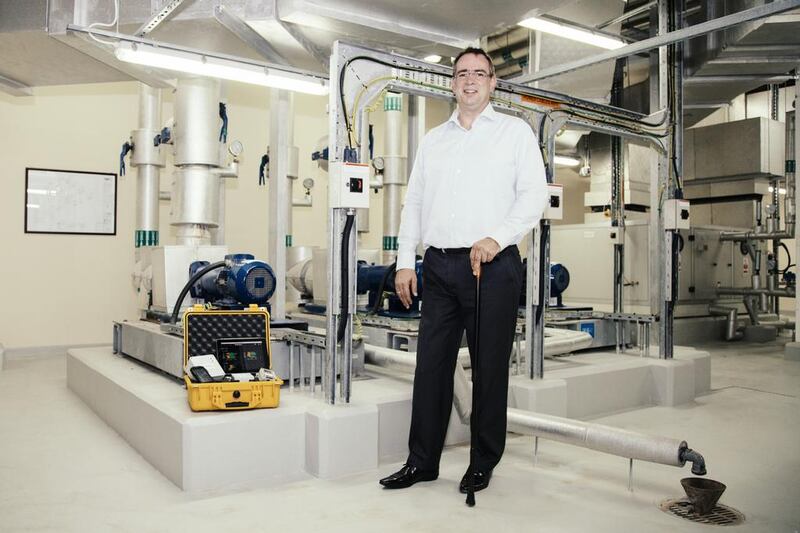ABU DHABI // Lowering energy consumption in households and businesses does not require new technology, but does require that consumers use older appliances moderately and intelligently, said Mike Otten, founder of an energy management company based in Dubai.
“I think in technology it’s all about making complex things easy,” said Mr Otten, chief executive of Sense4Things.
“It’s not about showing how complicated it is.”
The company uses technology that monitors consumption patterns and then analyses the data to make suggestions on how to lower energy usage.
Mr Otten, who is Dutch, entered the industry about a year ago and said that his business plan was met with apprehension.
“People were saying ‘what is this guy doing, what is he talking about?’ Using sensors and what not to lower energy usage with data, they didn’t understand how until I demonstrated the technology itself,” he said.
The hardware works by the installation of a simple clamp on to energy supplies that feeds information to a data box that can be monitored.
By connecting the data box through the internet, consumers can see where they are using the most energy.
They can then programme the device to have it send out warnings when usage has exceeded a self-determined cap.
“People can get a message on their smartphone, so they can call home and tell someone that there is no need for the A C to be on. It’s simple maths and that is how to save.”
He said that because the technology had been proven by companies such as Nest, a company recently acquired by Google that developed a smart thermostat, he has many potential clients.
“However, that is until they ask ‘how much does it cost?’ But that’s the wrong question to ask, the real question is how much does it save?”
Prices begin at about Dh4,400.
In some cases, Mr Otten was able to guarantee a return of investment within four months. But, he said, it was important to note that environmental management companies valued a facility’s assets at a higher rate because of green technology. Organisations such as Estidama or Leadership in Energy and Environmental Design will value a building more highly if it has energy-saving technology installed.
“Of course, you can look at this as a marketing campaign ... but actually delivering effects is the main point, and making it easy,” Mr Otten said.
One of the first enterprises to sign up, the Sultan Bulfara Al Kobaysi Mosque at Madinat Zayed, is working as part of Khidmah’s initiative to make mosques more energy efficient.
The mosque itself is being built to save water and electricity by using technology developed by Sense4Things for bigger businesses and industrial sites.
“Monitoring energy with mosques is not any different, we just have to show that the technology can be adapted to a wide range of buildings,” Mr Otten said.
As a pilot run, the success of the mosque will determine whether the technology will be installed in 30 other prayer sites designated by Khidmah’s Green Mosque initiative.
“The objective of the Green Mosques initiative is to preserve these buildings and make them greener by proactively conserving energy and water resources, which eventually brings down maintenance expenses and also reduces the carbon footprint risk on our environment,” said Shelley Jenkins, a Khidmah executive.
nalwasmi@thenational.ae






